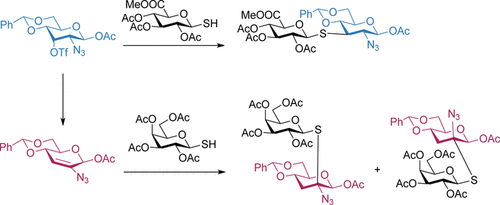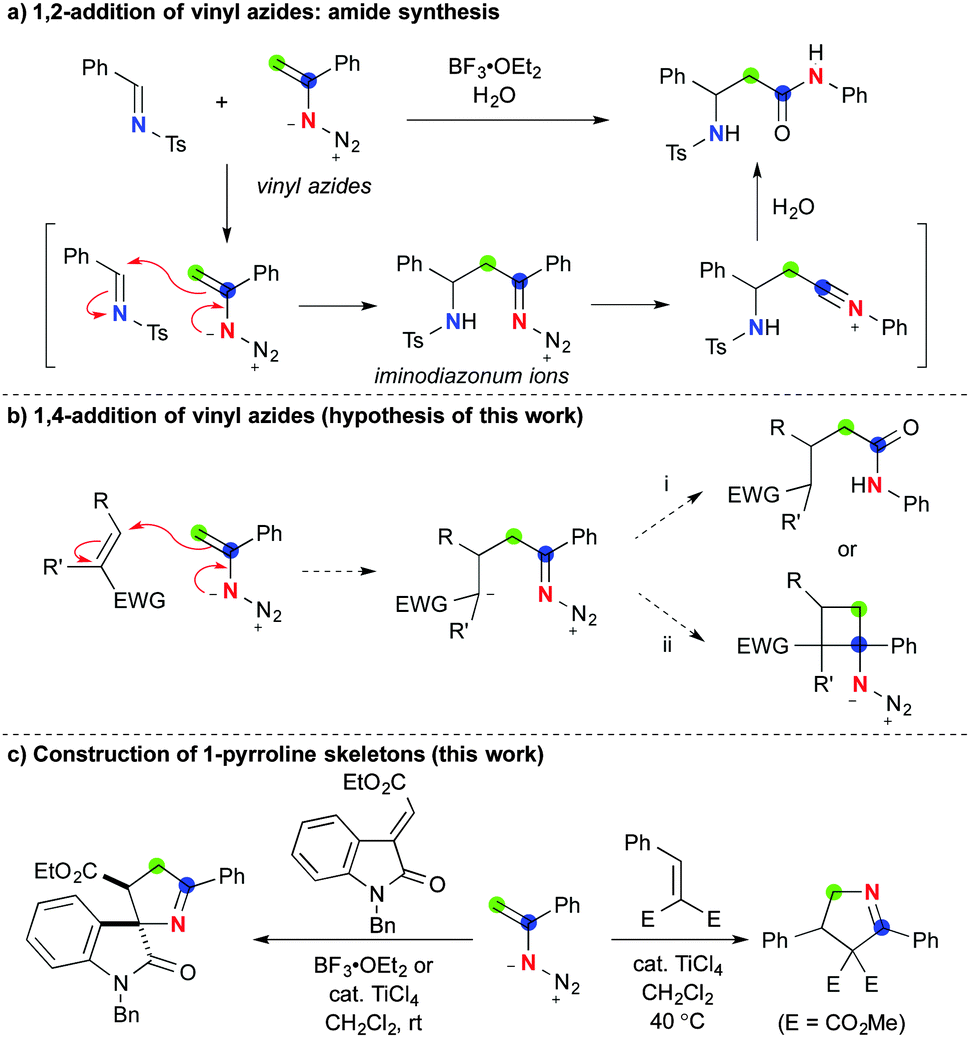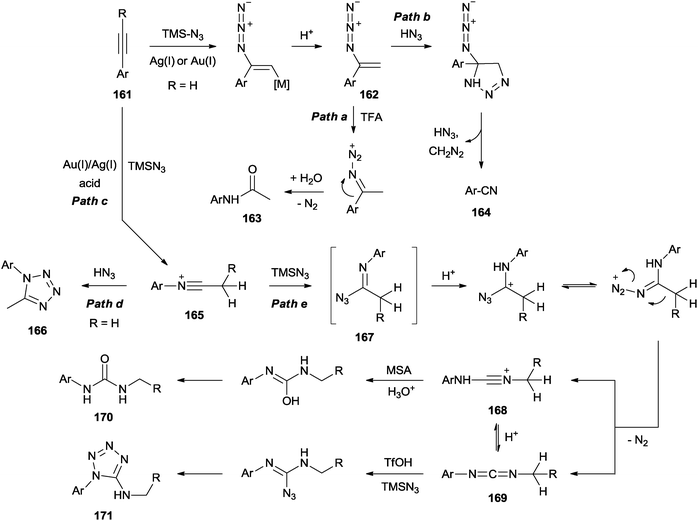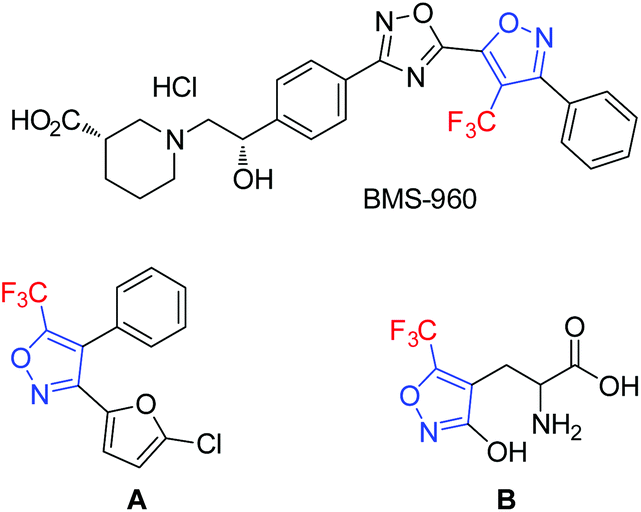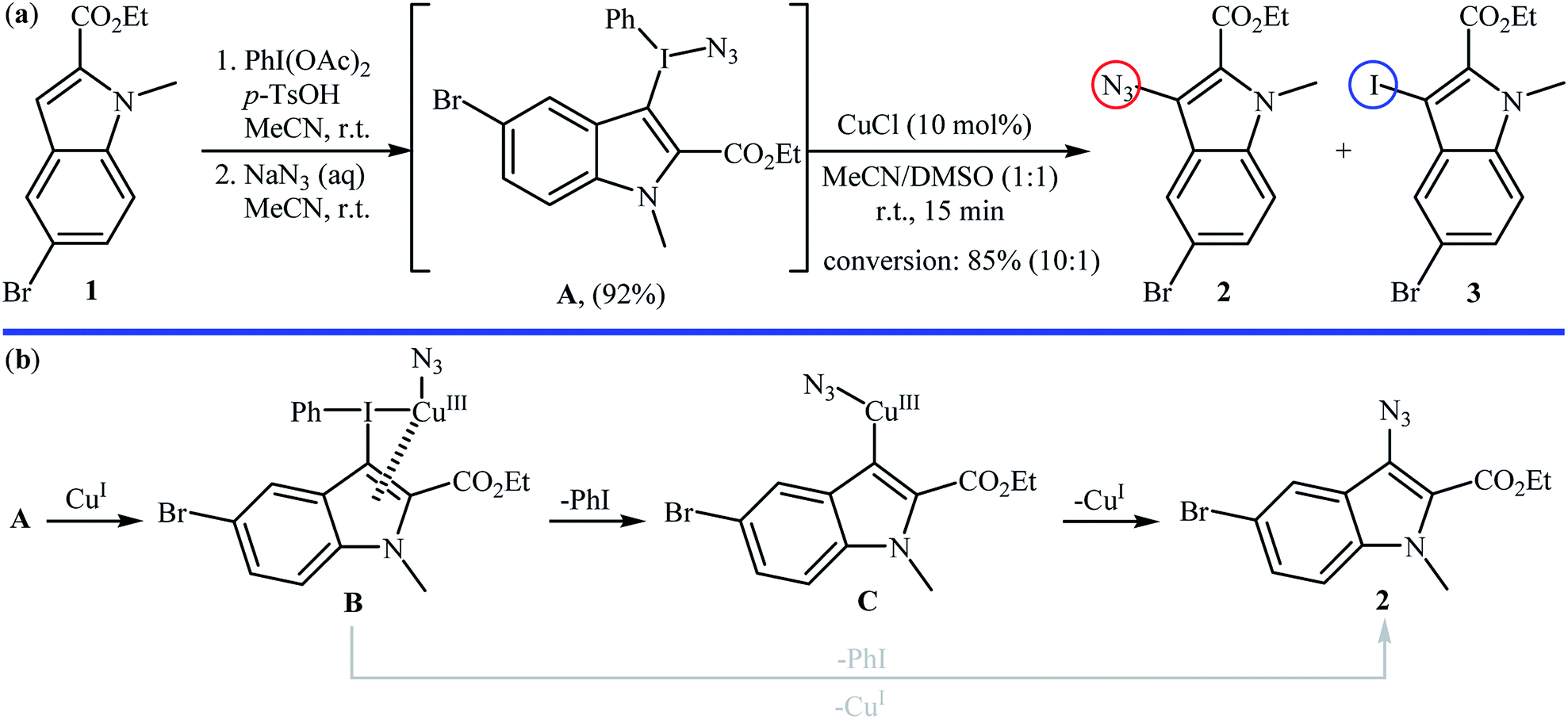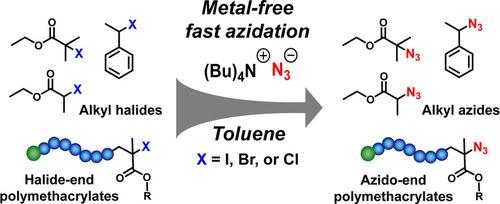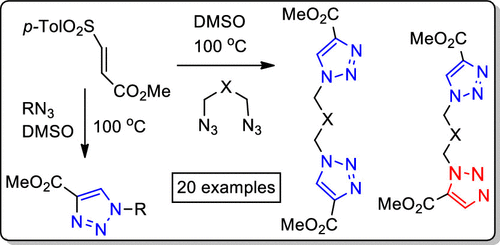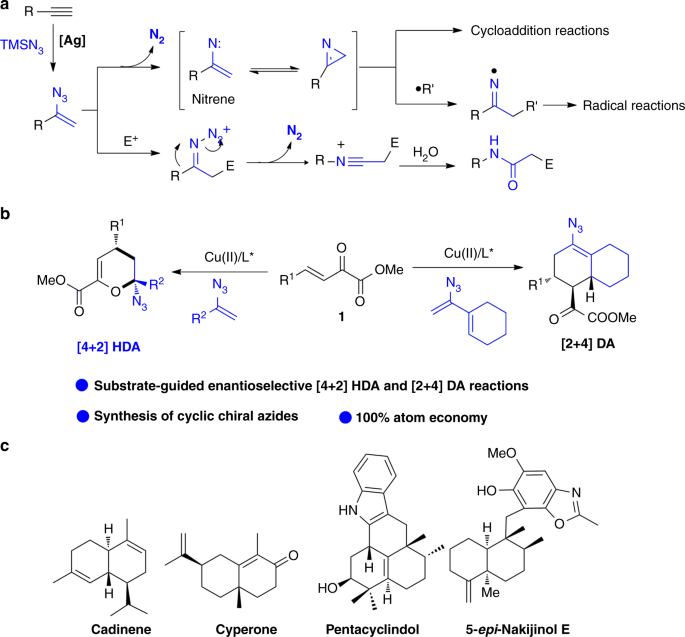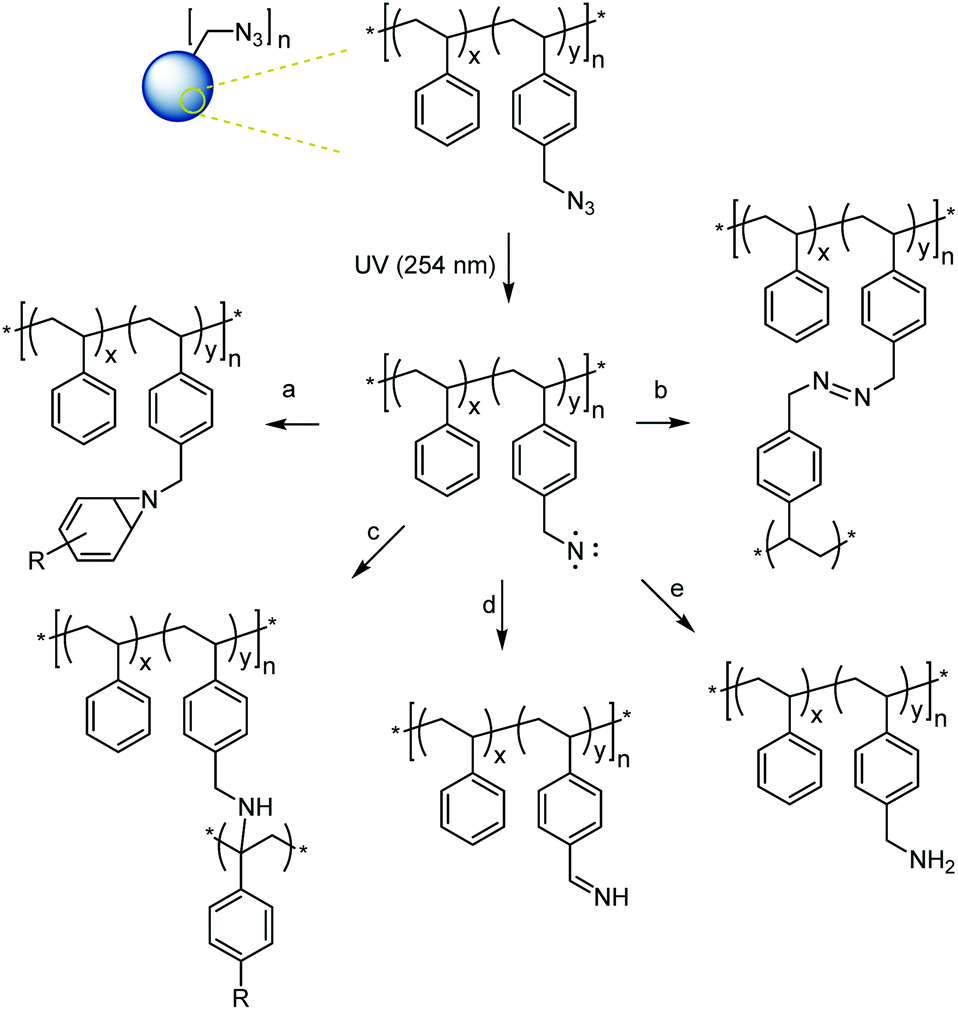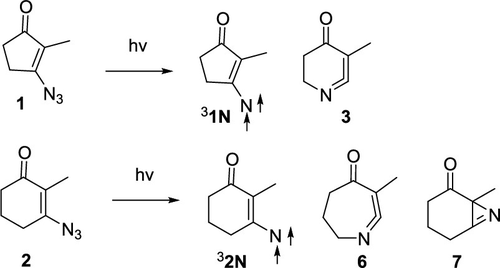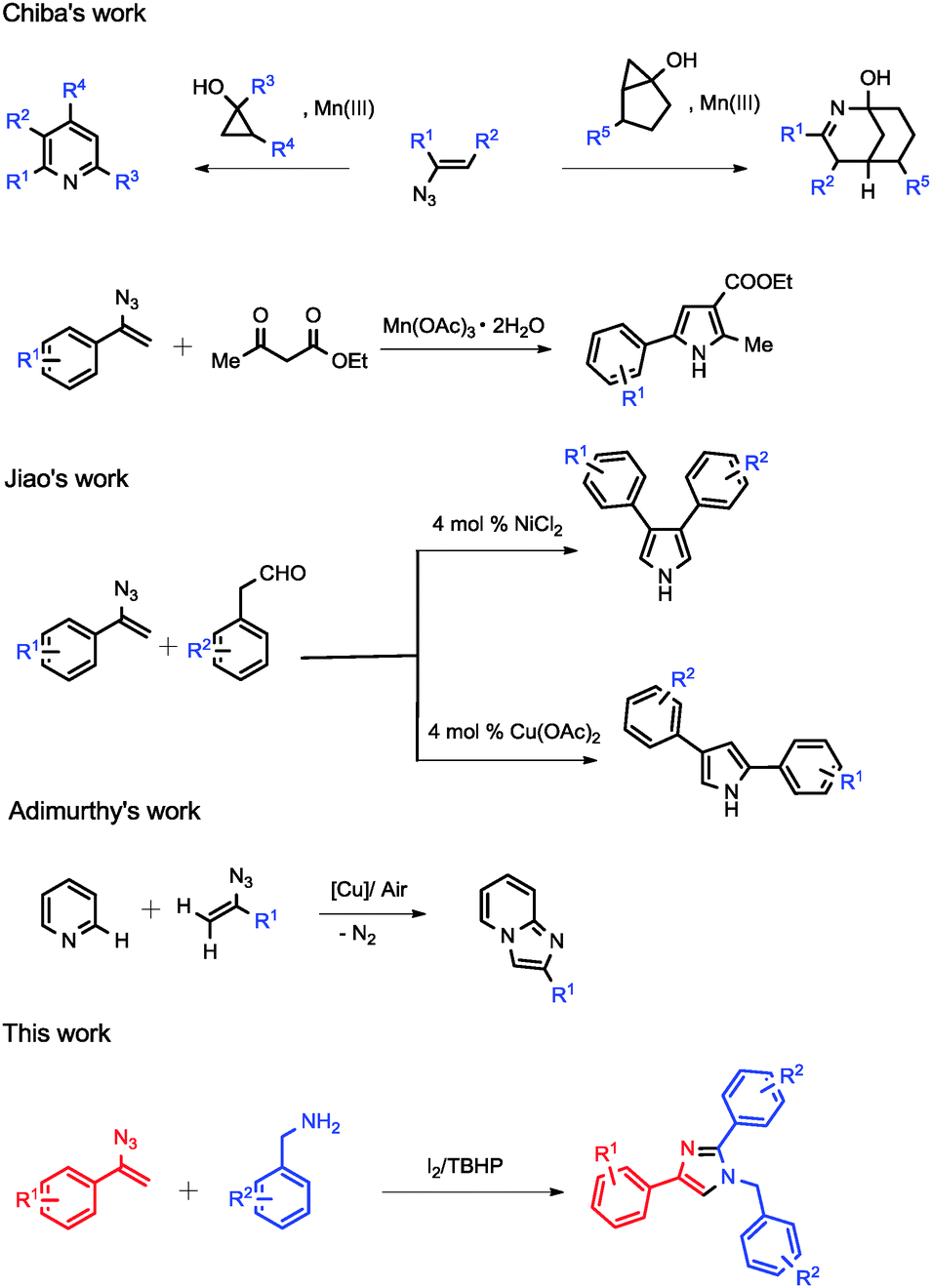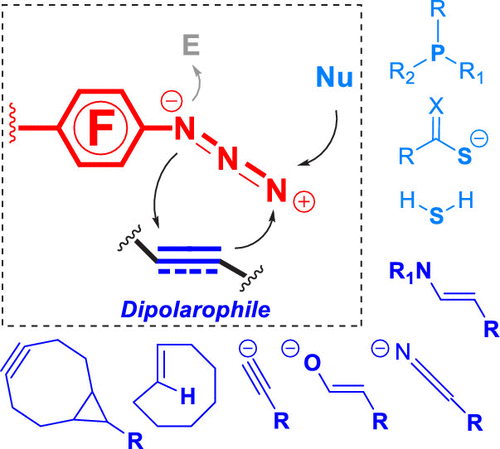Formation Of Vinyl Azides

Irradiation of vinyl and aryl azides with visible light in the presence of ru photocatalysts results in the formation of reactive nitrenes which can undergo a variety of c n bond forming reactions.
Formation of vinyl azides. Hi or t r 3 2 r rhydrogen alkyl aryl 2 r ralkyl aryl in the case ofterminal vinyl azides several workers assumed 1zirine as. Treatment of o deuterated aryl vinyl azide 1 o d 1 with tba fe led to a clean formation of indole 3 o d h in 70 yield. The requisite 3 azido e vinyl sulfones were prepared from 3 bromo e vinyl sulfones which in turn were accessed from allyl sulfones via a bromination elimination sequence. These information suggest that we can exclude the in.
In relation to this a one pot azidation isomerisation sequence was developed which enabled the direct formation of the vinyl azides from the corresponding 3. The ability to use low energy visible light instead of uv in the photochemical activation of azides avoids competitive photodecomposition processes that have long been a significant limitation. C n bond formation synthesis of azides synthesis of vinyl azides. Reaction of allenyl esters with sodium azide.
The journal of organic chemistry 2007 72 4 1534 1537. An efficient synthesis of e vinyl azides and polysubstituted pyrroles. Among organic azides vinyl azides have shown versatile chemical reactivities in the recent development of new synthetic methodologies mainly for nitrogen containing molecules. This synopsis highlights and discusses recent advances on use of vinyl azides in chemical synthesis as a radical acceptor and an enamine type nucleophile.
Azide is the anion with the formula n 3 it is the conjugate base of hydrazoic acid hn 3 n 3 is a linear anion that is isoelectronic with co 2 nco n 2 o no 2 and ncf per valence bond theory azide can be described by several resonance structures. It was established that the decomposition of internal vinyl azides i resulted in the formation of 2ubstitutedzirines ii and has been proved to be general and elegant method for 1zirine synthesis l 2 3. Recently chiba and narasaka demonstrated mn iii catalyzed pyrrole formation from variously substituted vinyl azides and β keto esters or 1 3 diketones scheme 16. Low loadings of a gold catalyst derived from a functionalized biaryl 2 ylphosphine ligand wangphos enable a direct addition of in situ generated hydrazoic acid to terminal as well as internal alkynes.
A small kinetic isotope effect was observed indicating that the c h bond scission process might not be the rate limiting step equ. The dominant application of. C n bond formation synthesis of azides synthesis of alkyl azides.








